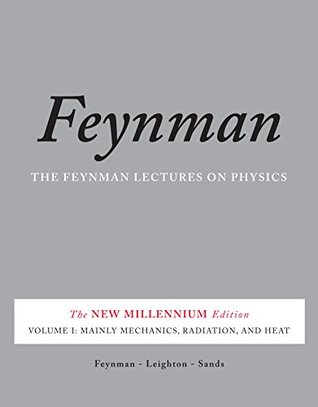More on this book
Kindle Notes & Highlights
Read between
November 15, 2015 - February 4, 2021
The Relation of Wave and Particle Viewpoints
Probability wave amplitudes
First of all, we know that the new way of representing the world in quantum mechanics—the new framework—is to give an amplitude for every event that can occur, and if the event involves the reception of one particle then we can give the amplitude to find that one particle at different places and at different times. The probability of finding the particle is then proportional to the absolute square of the amplitude. In general, the amplitude to find a particle in different places at different times varies with position and time.
Measurement of position and momentum
Crystal diffraction
The size of an atom
Energy levels
Philosophical implications
39
The Kinetic Theory of Gases
Properties of matter
The pressure of a gas
A compression in which there is no heat energy added or removed is called an adiabatic compression, from the Greek a (not) dia (through) bainein (to go). (The word adiabatic is used in physics in several ways, and it is sometimes hard to see what is common about them.) That is, for an adiabatic compression all the work done goes into changing the internal energy.
Compressibility of radiation
Temperature and kinetic energy
Thus when we have two gases at the same temperature, the mean kinetic energy of the CM motions are equal.
The ideal gas law
40
The Principles of Statistical Mechanics
The exponential atmosphere
So, these are the two questions that we shall try to answer: How are the molecules distributed in space when there are forces acting on them, and how are they distributed in velocity?
The Boltzmann law
Evaporation of a liquid
The distribution of molecular speeds
The specific heats of gases
The failure of classical physics
41
The Brownian Movement
Equipartition of energy
Thermal equilibrium of radiation
Equipartition and the quantum oscillator
The random walk
42 Applications of Kinetic Theory
Evaporation
It turns out that there are many, many phenomena in nature which are characterized by having to borrow an energy from somewhere, and in which the central feature of the temperature variation is to the minus the energy over . This is a useful fact only when the energy is large compared with , so that most of the variation is contained in the variation of the and not in the constant and in other factors.
Thermionic emission
Thermal ionization
Chemical kinetics
Einstein’s laws of radiation
43
Diffusion
Collisions between molecules
A particular particle does not have a collision, wait one minute, and then have another collision. The times between successive collisions are quite variable.
The mean free path
The drift speed
(Wrong!)
Ionic conductivity
Molecular diffusion
Thermal conductivity
44


